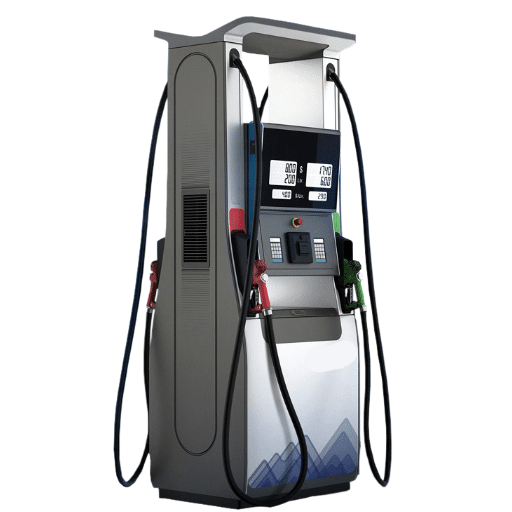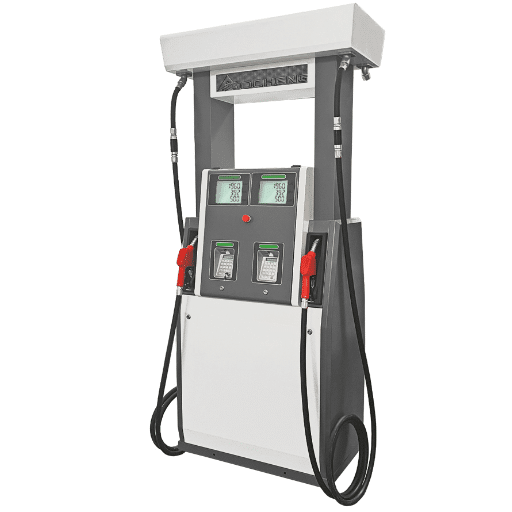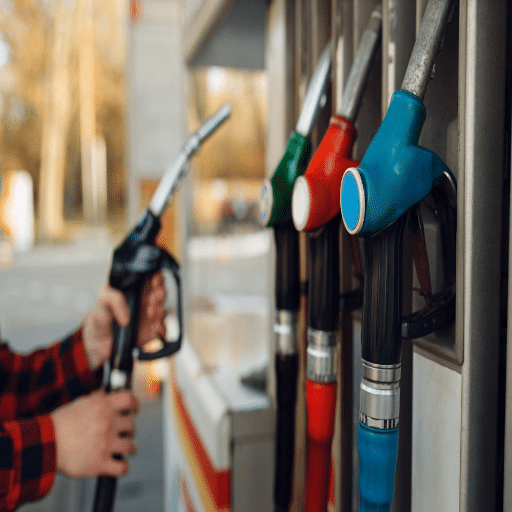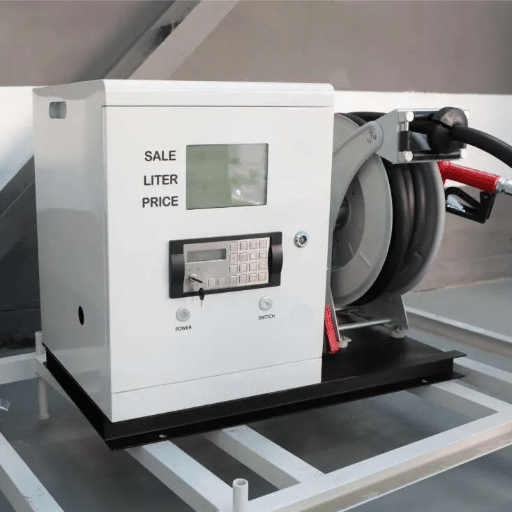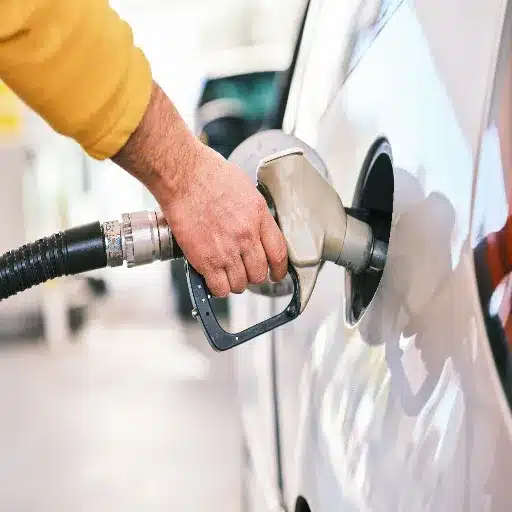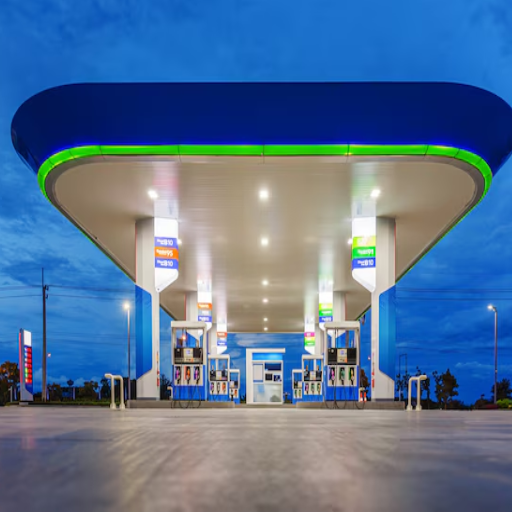Safety is an absolute necessity in hazardous environments. Proper lighting can facilitate an efficient operation and ensure the safety of personnel in areas such as industrial plants, oil and gas facilities, or chemical processing sites. In such unstable conditions, traditional lighting poses a very real threat-the risk of a spark can translate to a full-fledged disaster. But explosion-proof LED lights are the proper solution for these situations. With cutting-edge technology and rugged engineering, these lights are designed to operate in harsh environments while eliminating any possibility of igniting a flammable atmosphere. Through this article, we explore the features, benefits, and applications of explosion-proof LED lights, explaining why these systems need to be a cornerstone investment for industries operating in high-risk locations.
Understanding Explosion-Proof Lighting
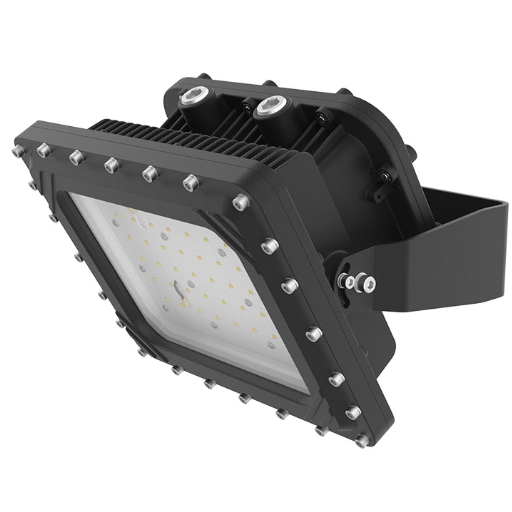
Explosion-proof lighting is designed for safe operations in hazardous situations where flammable gases, vapors, or dust might be present. In contrast with regular lighting fixtures, these fixtures are designed to ensure that no sparks or explosions originating inside them can ignite the surrounding atmosphere. Their heavy-duty construction with sealed housings permits them to endure and perform reliably, thereby making them indispensable in industries such as oil and gas, chemical processing, and mining. Explosion-proof lights contribute not only to safety but are also certified to meet stringent standards and regulations, ensuring optimal performance in high-risk areas.
What is Explosion-Proof Lighting?
Explosion-proof lighting refers to specialized lighting fixtures that are designed for safe use in environments containing hazardous gases, vapors, dusts, or fibers that may ignite. The lights are designed to ensure that no internal sparks or heat can cause an explosion through a rugged and sealed enclosure, which prevents any ignition from escaping outside. They are typically used in the oil and gas industry, chemical manufacturing, and mining, among other applications, where explosion-proof lighting is designed to standards as per UL, ATEX, and IECEx certifications. Due to their ruggedness, they provide reliable solutions in hazardous areas, minimizing the risk of fire or explosions, which is crucial for ensuring safety in these environments.
Importance of LED Explosion-Proof Lights
Due to their energy efficiency, durability, and reinforced safety features, these LED explosion-proof lights are essential for ensuring safety in hazardous environments. Standard lighting fixtures generate considerable heat, which may be enough to ignite an explosive atmosphere. LEDs generate nearly no heat, greatly minimizing this risk.
These LED explosion-proof lights are known to consume 75% less energy than traditional lighting while providing a significantly longer service life. Recent reports have highlighted that LED lighting solutions have an average lifespan of up to 50,000 hours. In contrast, conventional lighting can last far shorter than that, thereby requiring frequent replacements in hazardous zones. These longer lifespan figures thus translate into lower maintenance costs, as well as fewer risks associated with frequent fixture replacements in dangerous environments.
The high technology in the manufacturing of explosion-proof LED luminaires accounts for their design, which enables them to perform efficiently even under severe conditions, such as extreme temperatures, vibrations, or corrosive atmospheres. The presence of strong sealant features and protective barriers ensures illumination in areas needing secure lighting conditions, such as oil refineries, chemical plants, and mining operations, wherein visibility is one of the paramount factors for safety and productivity.
Moreover, many types of LED explosion-proof lights comply with international safety standards, with their variants also covering ATEX and IECEx certifications. These guarantees ensure their use under rigorous safety conditions and suitability for worldwide industrial applications. These LED explosion-proof lights offer a synergistic combination of energy efficiency, durability, and high-end safety measures, promoting a safe working environment and sustaining operations.
How Explosion-Proof Lights Work
Explosion-proof lights are designed to prevent ignition of flammable materials in hazardous environments. Their housing is constructed with strong materials such as aluminum or stainless steel, which could contain any spark, flame, or heat inside the fixture. The fixtures themselves are sealed so tightly that no gas, vapor, or dust could enter and possibly ignite on coming into contact with electric equipment. Moreover, tempered glass and advanced heat management are often embedded into the design of the explosion-proof light.
In keeping with the key principle behind these types of lights, containment and isolation are implemented. One would try to avoid an internal spark; here, the explosion-proof lights contain any explosion that may occur inside the enclosure, preventing it from escaping and igniting the surrounding atmosphere. Hence, these lights are classified as explosion-proof and are required in oil and gas refineries, chemical plants, and other areas where flammable substances are commonly used. Safety is the primary priority behind their design, with durability and efficiency being secondary considerations.
Types of LED Explosion-Proof Fixtures
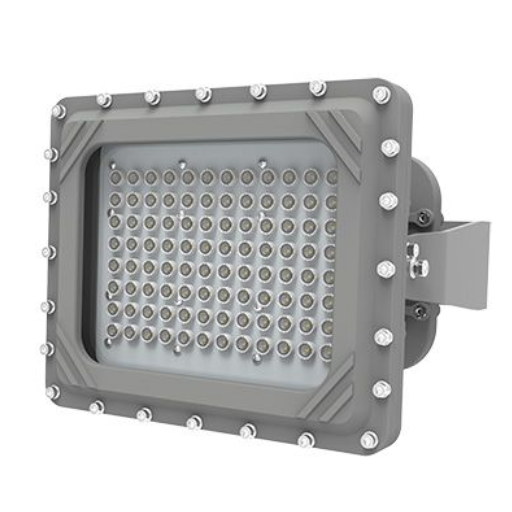
Wall-Mounted Fixtures: These types are designed to be mounted on walls and are used in hazardous areas to illuminate specific areas. They provide intense light that is focused and ensures safety.
Ceiling-Mounted Fixtures: These fixtures are suitable for providing general overhead illumination in confined or open areas. These types of console lights are heavy-duty and distribute light evenly over a large area.
Portable Fixtures: Lightweight, explosion-proof lights are easy to carry and are well-suited for temporary jobs or inspection work in hazardous environments.
Floodlights: These provide intense lighting over large areas, requiring bright light in widespread areas.
Linear Fixtures: These are typically installed in confined areas and narrow spaces to illuminate corridors, pathways, and workstations.
Each of these fixture types is purposefully designed to serve different operational requirements while maintaining the highest safety standards for hazardous environments.
40W LED Explosion Proof Options
Explosion-proof LED lights encompass a range of fixtures, including floodlights, linear fixtures, high-bay lights, low-bay lights, portable lights, and remote area lights.
|
Type |
Features |
Wattage |
Application |
Certifications |
|---|---|---|---|---|
|
Floodlights |
Broad, intense |
40W |
Large spaces |
UL, ATEX |
|
Linear Lights |
Narrow, focused |
40W |
Hallways |
UL, CSA |
|
High Bay |
Wide coverage |
40W |
High ceilings |
UL, IECEx |
|
Low Bay |
Lower ceilings |
40W |
Small areas |
ATEX, CSA |
|
Portable |
Flexible use |
40W |
Mobility |
UL, ATEX |
|
Remote Area |
Specialized |
40W |
Isolated areas |
IECEx, UL |
Intrinsically Safe Lights Explained
At their core, intrinsically safe lights are designed for use in areas where flammable gases, vapors, or dusts present a risk of explosion. These lights operate at extremely low energy levels and cannot create sparks or excessive heat that would ignite a combustible atmosphere. Meeting safety standards, including UL, ATEX, CSA, and IECEx certification, intrinsically safe lights provide proven illumination for oil, gas, mining, and chemical manufacturing industries with utmost safety.
Built to ensure the highest safety standards, these lights prevent accidental ignition through exceedingly rugged enclosures and manufacturing processes in the classified hazardous zones. They are well-suited for use in confined spaces, maintenance, and emergencies where safety is a top priority. Wherever intrinsically safe lighting is implemented, whether in remote areas or within high-risk industrial sectors, it enhances overall occupational safety while complying with global safety standards.
Comparing Different Light Fixtures for Hazardous Areas
When selecting light fixtures for hazardous locations, it is essential to consider design, certification, durability, and performance, as these areas are subject to particularly stringent safety requirements. The following is a comparative analysis of the potential prevailing between the types of lighting options commonly used in dangerous environments:
Intrinsically Safe LED Lights: Intrinsically safe LED lights are designed with the principle of never generating sparks or becoming hot enough to ignite hazardous substances under any conditions. These lights are suitable for Class I, Division 1, or Zone 1 areas. This inherently ensures excellent energy efficiency and a long lifespan, with most models featuring aluminum or polycarbonate enclosures for added durability. Some of the more expensive models offer lumen outputs ranging from 1,000 to 3,000 lumens, providing bright illumination for small spaces and other high-risk environments.
Explosion-Proof Fixtures: Explosion-proof fixtures are constructed with heavy-duty enclosures to contain any sparks or explosions within the fixture itself, making them suitable for locations where flammable gases or vapors are present. These lights are well-suited for demanding industrial environments, offering high power capabilities, with some models capable of up to 50,000 lumens. They are generally mounted either portably or fixed to provide versatility in various site operations.
Portable Hazardous Location Lighting: Portable hazardous location lighting is all about providing convenience and safety. Typically battery-operated, features such as magnetic mounting or adjustable heads allow these light sources to be directed where needed. They are great for maintenance or emergencies and are built ruggedly, generally certified for use in Zones 0 or 1. A standard lamp can provide anything from 500 to 1,500 lumens, depending on the size and power configuration.
Choosing a suitable light fixture involves considering the ingress protection rating (IP65 or higher), temperature tolerance, and, in some instances, compliance with relevant standards, such as UL, ATEX, and IECEx. Since lighting has a significant impact on safety, operational efficiency, and compliance requirements in hazardous environments, the correct lighting must be installed.
Standards and Classifications for Hazardous Locations
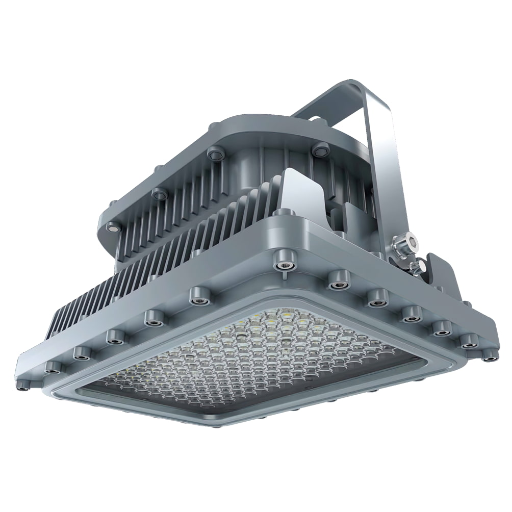
For hazardous locations, some standards exist for the safe design of equipment and the protection of personnel. Among the most well-known standards commonly referred to in this respect:
UL (Underwriters Laboratories): An organization concerned with safety performance, since it certifies equipment for use in hazardous areas.
ATEX (Atmosphères Explosibles): A European Directive which regulates the use of tested equipment in explosive atmospheres.
IECEx (International Electrotechnical Commission System for Certification to Standards Relating to Equipment for Use in Explosive Atmospheres): Based on certification systems worldwide, where one ensures that equipment complies with international safety standards.
These classifications and standards help identify risk and design, test, and certify equipment suitably to prevent accidents in hazardous environments.
Lighting Requirements for Hazardous Areas
Lighting in hazardous areas must adhere to strict safety standards to minimize any risks posed by the presence of explosive gases, vapors, or dust. Requirements included the following:
Explosion-proof Design: Fixtures must be designed in a way that sparks or heat cannot be generated and used to ignite hazardous substances, as per standards such as UL, ATEX, and IECEx certifications.
High Durability: The lights must be ruggedized with enclosure ratings ranging from IP65 to IP68, resisting dust, water, and impacts to prevent safety compromise in harsh outdoor environments.
Appropriate Voltage and Mounting: Variable voltage options (e.g., 120V-277V or 12V) and mounting options (ceiling, wall, or pendant) are available to accommodate different setups and applications.
Energy Efficiency and Long Lifespan: LED lights offer efficient illumination with a lifespan of over 50,000 hours, providing lumens ranging from 10,000 to 40,000, ensuring consistent performance over time.
Suitability for Indoor and Outdoor Use: Lights functioning in secondary environments must protect from extreme temperature and moisture conditions.
All of these ensure lighting that is safe, efficient, and durable for numerous hazardous area uses where people and the elements of hazard are considered.
Compliance with Safety Regulations
It is essential to ensure compliance with safety regulations when selecting lighting for hazardous locations. Lights undergo rigorous testing to meet global standards and consider others’ perspectives on reliability. The regulatory and certifying bodies could include the following:
ATEX (EU): Equipment and protective systems for use in potentially explosive atmospheres must comply with ATEX Directives 2014/34/EU and 1999/92/EC. It includes testing of lights under explosive atmospheres of gas and dust and contains zone-specific classification for implementation (e.g., Zone 0, Zone 1, Zone 2).
IECEx Certification (International): The IECEx scheme is meant to demonstrate worldwide compliance of a product with standards for explosive atmospheres. IECEx will test the product for both electrical and mechanical strength, as well as its resistance to environmental hazards.
UL844 (North America) and CSA (Canada) Standards: The abortive underwriters and the Canadian CSA assessed the use of lighting in hazardous locations: Class I flammable gases and vapors; Class II combustible dust; and Class III fibers and flying debris.
Ingress Protection (IP) Ratings: In hazardous areas, IP ratings such as IP66 or IP67 protect against water and dust ingress, ensuring their ability to withstand harsh environmental conditions.
Temperature Code (T-Code) Ratings: T-codes specify the maximum surface temperature that the equipment will attain during operation. If the equipment is rated T6, then the maximum surface temperature shall not exceed 85°C, which is sufficiently low to prevent ignition of flammable materials.
Safety standards fully complied with by industries ensure a reduction of up to 25% in workplace accidents in hazardous zones, pointing out an important aspect: certified and reliable lighting solutions must be used. Regular maintenance, along with compliance with regulations, ensures operational stability and safety throughout.
Benefits of Using LED Explosion-Proof Lighting
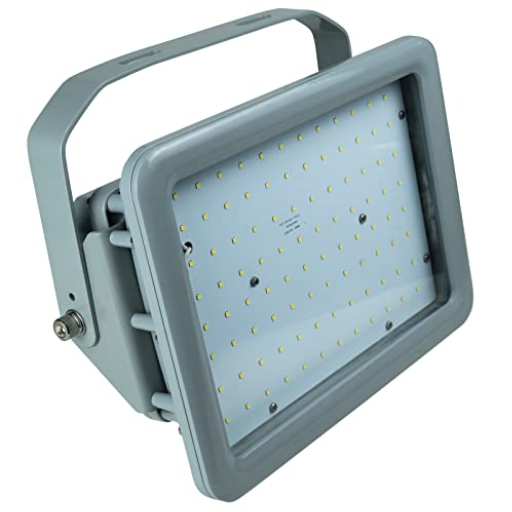
Enhanced Safety: These are explosion-proof lights, designed to operate safely in hazardous areas, thereby eliminating sparks or heat that could lead to dangerous incidents.
Energy Savings: LED lights use significantly less energy than traditional lighting, resulting in lower energy bills and maintaining excellent performance.
Long Life: LED explosion-proof lights typically feature a rugged construction that can withstand extreme conditions, ensuring they operate reliably for many years with minimal need for replacement.
Visibility: LED lighting offers bright illumination with excellent reliability, ensuring good visibility in critical work areas and enhancing workplace safety.
Low Maintenance: Due to their durability and lifespan, LED explosion-proof lights require less maintenance, fewer downtime incidents, and lower costs.
Energy Efficiency and Cost Savings
Energy efficiency is attributed to explosion-proof LED lighting, as it consumes less energy compared to incandescent and fluorescent lamps. On average, LED lamps can yield 75% of the energy savings, resulting in substantial savings over time, according to industry reports. For instance, a facility that adopts LED lights may reduce its annual energy usage for lighting by thousands of kilowatt-hours, resulting in savings of several hundred to thousands of dollars on the electricity bill, depending on its size.
Moreover, the long lifespan of LED lights, ranging from approximately 50,000 to 100,000 hours of illumination, means that replacement is less frequent, resulting in more cost savings in terms of materials and labor. Conventional incandescent bulbs could require replacement within a matter of months or years of use, whereas LEDs can last for years under normal operating conditions. Reduced energy consumption means a reduced carbon footprint, allowing businesses to also benefit from these sustainability initiatives. This bleach-proof LED, resistant to explosion, offers efficiency, durability, and cost-effectiveness, thus acting as a cost-effective and environmentally friendly alternative for industries.
Longevity and Durability of LED Lights
The merit of LED lights lies in their longevity and durability, which have favored their widespread adoption across various industries. Typically, with the usage time, LED lights have set duration that is around 50,000 to 100,000, which in contrast is far without comparison to incandescent bulbs that average a mere 1,000 hours or fluorescent lights that otherwise last for an average of 8,000 to 15,000 hours only. This striking longevity, therefore, allows for years of flawless operation, resulting in fewer replacements and, consequently, lower maintenance costs.
Concerning durability, another key advantage of LED lighting is that, unlike traditional lighting, LED lights are designed without fragile filaments or glass enclosures that can easily break. Being solid-state in nature, they are resistant to vibrations and shocks caused by rough terrain and climatic conditions, such as extreme temperatures, moisture, and dust. This ability made them an ideal choice for industrial lighting in hostile environments, such as factories, oil refineries, and hazardous locations.
Furthermore, studies have shown that LED lights consistently maintain their specified efficiency over time. They experience far less lumen depreciation, i.e., their total light output decreases at a significantly slower rate than ordinary lighting. This guarantees better illumination throughout their entire functioning period and practically makes them dependable for both indoor and outdoor usage.
Considering the total cost of ownership, these qualities—longevity and durability, along with lower energy consumption —yield significant savings on the horizon. For industries requiring continuous lighting in challenging conditions, purchasing more LED lights will provide better performance and also promote sustainability through sustainable disposal and energy conservation.
Enhanced Safety in Hazardous Environments
LED lighting is crucial for safety in areas where hazards exist, such as oil refineries, chemical plants, or mining operations. Coming from old systems, they tend to generate excessive heat, which presents a risk in areas with combustible materials. LED lights operate at a cooler temperature, thereby reducing the risk of fire and explosion in sensitive environments.
And since these LED lights have dust-proof, water-proof, and vibration-proof casings, they can work reliably even in harsh industrial environments. It has been found that good illumination by LEDs can reduce the number of accidents in workplaces. They do this by eliminating shadows and enhancing visibility in complicated environments. Flicker-free lighting, achieved with LEDs, reduces eye strain and improves concentration among workers operating heavy machinery, thereby increasing productivity and enhancing safety.
Regarding many LED fixtures that bear explosion-proof certifications, such as ATEX or IECEx standards, which meet stringent safety regulations, they are also long-lasting, resulting in fewer instances of maintenance within hazardous spaces. As such, fewer occasions would otherwise put workers at risk, such as manual jobs like changing a bulb. Considering this alone, it further strengthens another argument for LED lights as a key ingredient in the safe and efficient operation of any hazardous environment.
Installing LED Explosion-Proof Lighting
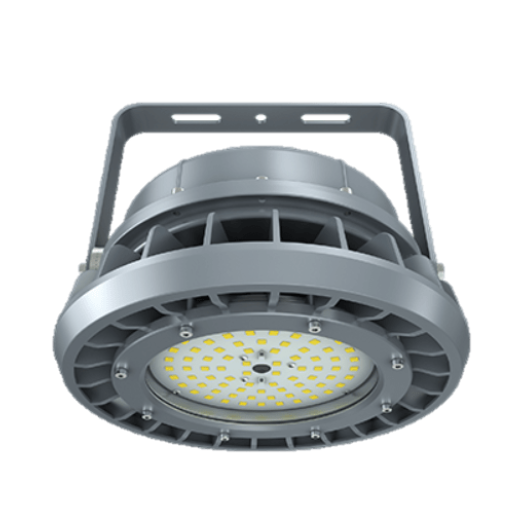
LED explosion-proof lighting installations require careful inspection to ensure that fixtures are rated for the worst-case scenario in the very hazardous environment in which they will be used. First, examine the classification of the dangerous area to confirm whether the lighting is approved under the appropriate standards, such as ATEX or IECEx. Lastly, ensure that the fixtures are disposed of correctly, providing excellent lighting while minimizing exposure to hazardous substances.
Furthermore, refer to the manufacturer’s instructions and comply with applicable local and international codes. Careful wiring and tight connections will ensure that there are no accidental sparks or failures. Afterward, you may want to consider hiring an expert to perform the installation correctly, ensuring both safety and efficiency.
Best Practices for Installation in Hazardous Locations
In hazardous locations, install only such equipment that is approved for installation in the classified environment (e.g., explosion-proof or intrinsically safe devices). All enclosures, conduits, and fittings shall be sealed against the ingress of flammable substances. Conduct a risk assessment to identify special hazards and protect against them.
Wiring methods shall comply with the National Electrical Code (NEC) or other applicable standards in hazardous locations, such as conduit systems or armored cables, as required by the specific conditions. Periodic inspection and maintenance of equipment are crucial to ensure its integrity and long-term functionality.
Personnel shall undergo proper training in the techniques used during installation and maintenance to instill in them knowledge of the risks associated with hazardous environments and the correct practices to maintain safety.
Maintenance Tips for Explosion-Proof Lights
For explosion-proof lighting to be safe and work efficiently, I recommend regular inspections, including all necessary checks to identify any signs of damage or wear and tear. Concrete signs include some cracks in enclosures or loose fittings. Clean dust or debris periodically, as it may compromise the integrity of the device. Another point to note is to use only replacement parts specified in the manufacturer’s guidelines. A maintenance and check log will certainly serve well to record inspections, repairs, replacements, and reviews, ensuring that safety and performance are not compromised over time.
Choosing the Right Fixture for Your Needs
The right fixture is essentially a matter of assessing a few key factors to meet your specific requirements. First, evaluate the purpose and location of the fixture. Indoor fixtures care about aesthetics and ambiance; outdoor fixtures require durability and weather resistance. Second, consider the type of lighting you want: ambient, task, or accent. LED fixtures are popular due to their energy efficiency and exceptionally long lifespan. Third, assess the size and style of the fixture to make sure it fits the space and the existing decor. You want to pay attention to brightness levels, color temperature, and dimming capabilities, as all can be adjusted to your liking. Last but not least, check the product specifications and customer feedback to ensure quality. Consult with a professional, if required, and make your decision with confidence.
Reference Sources
Optimization of Hydrogen Sensing Performance of Pt/WO3 Gasochromic Film
Frequently Asked Questions (FAQs)
What are explosion-proof lights, and how do they work?
Explosion-proof lights are specially designed lighting fixtures that are constructed to prevent the ignition of flammable gases, vapors, or dust that may be present in hazardous locations. These lights are built to contain any explosion within the fixture itself, thereby preventing the spread of flames or pressure waves to the surrounding area. The design and materials used in these lights comply with safety standards set by organizations such as the National Fire Protection Association (NFPA).
What is LED explosion-proof lighting and its benefits?
LED explosion-proof lighting utilizes light-emitting diodes (LEDs) in fixtures designed for hazardous environments. These lights offer a high lumen output while consuming less energy compared to traditional incandescent or fluorescent options. Furthermore, LED fixtures are eco-friendly, have a longer lifespan, and provide 5000K daylight-like illumination, making them ideal for industrial settings and offshore applications.
What are the classifications of hazardous locations for lighting?
Hazardous locations are classified based on the potential for explosive materials to be present. Class 1 includes areas where flammable gases or vapors may exist, while Class 2 is for locations with combustible dust. Within these classes, there are divisions; for instance, Class 1 Division 1 implies the presence of explosive materials under normal operating conditions, whereas Class 1 Division 2 indicates that flammable substances are generally not present but could occur under abnormal conditions.
How does explosion-proof lighting meet safety standards?
Explosion-proof lighting is designed to meet stringent safety standards by being built to withstand high pressure and temperature changes without igniting any flammable materials. These fixtures are tested to ensure they can contain any internal explosion and are often certified by relevant international safety organizations for use in hazardous areas.
What types of fixtures are used in hazardous location lighting?
Various types of fixtures are used in hazardous location lighting, including high-quality LED fixtures, jelly jar lights, and specialized area lighting solutions. Each type is designed to address specific lighting requirements and ensure maximum safety and efficiency in environments where flammable particles or liquids are present.
What are the advantages of using LED hazardous lights?
LED hazardous lights offer numerous advantages, including energy efficiency, high lumen output, and a longer lifespan compared to traditional lighting options. They consume less power, which translates to cost efficiency, and their robust construction ensures they can withstand harsh industrial settings. Additionally, LED lights emit less heat, further reducing the risk of ignition in hazardous areas.
What is the importance of using intrinsically safe lights in hazardous areas?
Intrinsically safe lights are crucial in hazardous areas as they are designed to prevent any electrical sparks that could ignite flammable materials. These lights are engineered to limit the energy available in the circuit to a level that is incapable of causing an explosion, making them essential for ensuring safety in environments where explosive gases or dust might be present.
How can I choose the right explosion-proof light fixture for my needs?
Choosing the right explosion-proof light fixture involves considering several factors, including the classification of the hazardous location, the specific lighting requirements, and the type of materials present in the environment. It is essential to select fixtures that are designed to meet the safety standards for your specific application, ensuring that they provide adequate illumination while maintaining safety in potentially dangerous settings.

